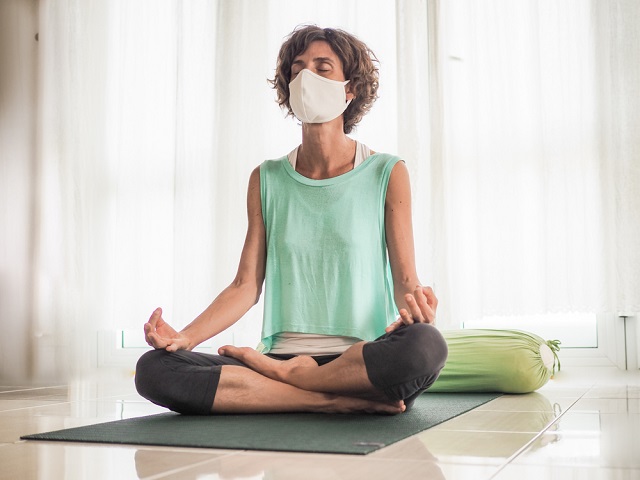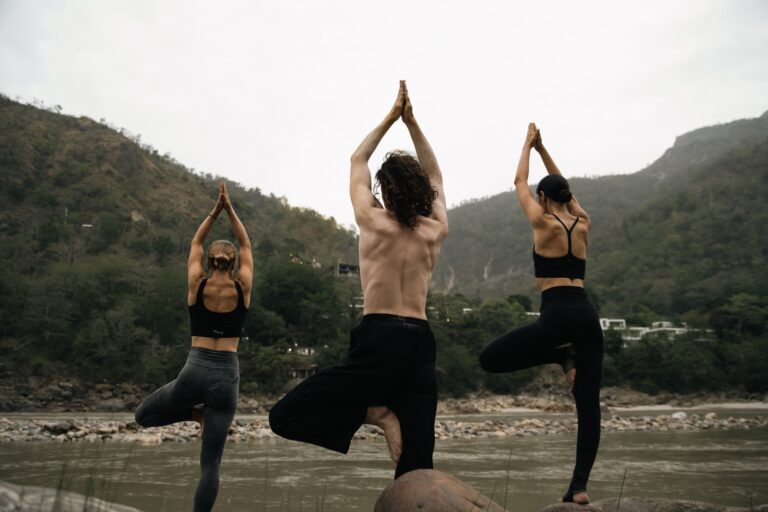How to Meditate When You’re Sick: The Healing Power of Meditation
In today’s fast-paced world, it’s easy to neglect our health when we’re under the weather. However, do you know how to meditate when you’re sick? In this article, we will explore the healing power of meditation and provide you with practical tips on how to incorporate meditation into your wellness routine, even when you’re not feeling your best.
Meditation has been practiced for thousands of years and has numerous benefits for our mental and physical well-being. When we’re sick, meditation can help alleviate symptoms, reduce stress, and speed up the recovery process. By engaging in this ancient practice, we can tap into our body’s natural healing abilities and promote a sense of calm and relaxation.
Whether you’re dealing with a common cold, flu, or more severe illnesses, meditation can provide a soothing balm for your mind and body. So dust off your meditation cushion and join us on this journey of self-healing through the power of meditation. Don’t let your sickness hold you back – let meditation guide you toward a path of wellness and vitality.
Understanding the Connection Between Meditation and Sickness
When we’re sick, our bodies are in a state of imbalance. Our immune system is working overtime to fight off the illness, and our minds can become overwhelmed with worry and stress. Meditation can help restore this balance by calming the mind and allowing the body to heal more efficiently.
Scientific studies have shown that meditation can have a positive impact on our immune system. A study conducted at the University of Wisconsin-Madison found that individuals who practiced meditation had higher levels of antibodies, which are essential for fighting off infections. Another study published in the journal Psychosomatic Medicine found that meditation can reduce the production of inflammatory chemicals in the body, which can help alleviate symptoms of illness.
Furthermore, meditation has been shown to reduce stress levels, which can have a detrimental effect on our immune system. In times of stress, our bodies release stress hormones that can compromise our immune system’s responsiveness. By practicing meditation, we can activate the relaxation response and counteract the adverse effects of stress on our health.

Scientific Research on the Healing Effects of Meditation
Over the years, numerous scientific studies have been conducted to understand the healing effects of meditation. These studies have shown that meditation can have a profound impact on our physical and mental well-being.
One study published in the Journal of Alternative and Complementary Medicine found that meditation can improve symptoms of respiratory illnesses, such as asthma and bronchitis. By practicing meditation, individuals experienced reduced inflammation in their airways and improved lung function.
Another study conducted at Harvard Medical School found that meditation can alleviate symptoms of chronic pain. The researchers found that individuals who practiced meditation experienced a significant reduction in pain intensity and reported an improved quality of life.
Furthermore, meditation has been shown to improve sleep quality, reduce anxiety and depression, and enhance overall well-being. These positive effects can be especially beneficial when we’re sick, as they can help us cope with the physical and emotional challenges of illness.
Different Types of Meditation Techniques for When You’re Sick
Various types of meditation techniques can be beneficial when you’re sick. It’s essential to find a method that resonates with you and feels comfortable for your current state of health.
Breathing Meditation
This method entails concentrating on your breath while you breathe in and out. It helps calm the mind and brings attention to the present moment. Find a comfortable position, close your eyes, and take slow, deep breaths. As you breathe in, imagine healing energy entering your body, and as you breathe out, visualize any illness or discomfort leaving your body.
Body Scan Meditation
This technique involves systematically scanning your body from head to toe, bringing awareness to any sensations or areas of tension. Start at the top of your head and slowly move down through your body, releasing any tension or discomfort you may encounter. This technique can help you connect with your body, promote relaxation, and alleviate physical symptoms.
Loving-Kindness Meditation
This approach entails nurturing sentiments of love and compassion for yourself and others. When you’re sick, it’s important to practice self-care and treat yourself with kindness. Find a quiet space, close your eyes, and repeat phrases such as “May I be healthy and strong” or “May I be free from suffering.” Extend these sentiments to others, sending healing energy and well-wishes to those who may also be sick.
Remember, there is no right or wrong way to meditate. The key is to find a technique that resonates with you and supports your healing journey.
Preparing Your Body and Mind for Meditation While Sick
When you’re sick, it’s essential to listen to your body and adjust your meditation practice accordingly. Here are some tips to help you prepare your body and mind for meditation while sick:
1. Choose a comfortable position
Find a posture that feels comfortable for your body. This could be sitting on a chair, lying down, or even propping yourself up with pillows. The key is to find a position that allows you to relax and breathe deeply without causing any additional discomfort.
2. Practice gentle movements
Before settling into meditation, consider incorporating gentle movements or stretches to help release tension in your body. This could be as simple as rolling your shoulders, stretching your neck, or doing a few gentle twists.
3. Take your time
When you’re sick, it’s essential to be gentle with yourself and not push beyond your limits. Take your time to settle into your meditation practice, allowing yourself to embrace the present moment fully.
4. Set realistic expectations
Understand that your meditation practice may be different when you’re sick. You may need to shorten the duration of your sessions or modify your techniques to accommodate your current state of health.
Remember, the goal of meditation is not perfection but rather a gentle exploration of your inner world. Adapt your practice to suit your needs and honor your body’s healing process.
Creating a Comfortable Meditation Space
Creating a comfortable and peaceful meditation space can enhance your meditation practice incredibly when you are sick. Here are some tips to help you create a nurturing environment for your meditation:
1. Find a quiet space
Choose a location in your home where you can minimize distractions and external noise. This could be an additional room, a section of your bedroom, or even a serene area in your garden.
2. Set the mood
Consider using soft lighting, such as candles or a dimmed lamp, to create a calming ambiance. You can also play soothing music or nature sounds to help create a peaceful atmosphere.
3. Use comfortable cushions or chairs
It’s essential to have a comfortable seating arrangement that supports your body. If sitting on the floor is uncomfortable, consider using a meditation cushion or a supportive chair.
4. Add personal touches
Make your meditation space your own by adding elements that bring you joy and relaxation. This could be a favorite photo, a plant, or any other item that holds special meaning to you.
Remember, your meditation space should be a reflection of your personal preferences and should promote a sense of tranquility and well-being.
Tips for Maintaining a Consistent Meditation Practice While Sick
Maintaining a consistent meditation practice while sick can be challenging, but with a few strategies and adjustments, it is possible. Here are some tips to help you stay committed to your practice even when you’re not feeling your best:
1. Be flexible
Understand that your meditation practice may need to be modified depending on your energy levels and physical comfort. Shorten your sessions if needed, or switch to a more gentle and restorative practice.
2. Set realistic goals
Instead of aiming for long meditation sessions, set achievable goals to commit to. Even a few minutes of meditation can make a difference in your well-being. Gradually increase the duration of your practice as you start feeling better.
3. Find accountability
Communicate your meditation commitment to a friend or family member who can assist in keeping you accountable. Knowing that someone else is supporting your practice can provide motivation and encouragement.
4. Use reminders
Set reminders on your phone or place visual cues, such as a meditation cushion or a calming image, in your meditation space. These reminders can help you stay on track and prompt you to pause and take time for yourself.
5. Practice self-compassion
Be gentle with yourself if you miss a meditation session or struggle to focus. Remember that meditation is a practice, and every moment is an opportunity to start anew. Treat yourself with kindness and understanding, knowing that you’re doing your best under the circumstances.

Guided Meditation for Healing and Relaxation
Guided meditation can be a powerful tool for healing and relaxation, especially when you’re sick. It provides a structured practice to help you focus your mind and tap into your body’s natural healing abilities. Here is a simple guided meditation for healing and relaxation:
- Discover a cozy posture, whether sitting or reclining. Shut your eyes and take a few deep breaths to ground yourself.
- Begin by bringing your attention to your breath. Observe the feeling of your breath as it enters and exits your body. Allow your breath to become slower and deeper as you relax your body with each exhale.
- Now, imagine a warm, healing light surrounding your body. Visualize this light entering your body with each breath, filling every cell with healing energy. Feel this energy permeate your entire being, bringing a sense of calm and well-being.
- As you continue to breathe, bring your attention to any discomfort or illness in your body. Imagine the healing light explicitly targeting these areas, gently soothing and healing them with each breath.
- Pause for a moment to extend kindness and compassion to yourself. Repeat affirmations such as “I am healing” or “I am worthy of wellness.” Allow these words to resonate with you, nurturing a sense of self-love and acceptance.
- Finally, expand your awareness to include others who may be sick or need healing. Send thoughts of love and well-being to them, imagining your healing light spreading out to touch their lives as well.
- Take a few additional deep breaths, gradually reorienting your awareness to the current moment. When you’re ready, gently open your eyes and take a moment to reflect on your experience.
Remember, guided meditations can be found online or through meditation apps. Experiment with different guided meditations to find the ones that resonate with you and support your healing process.
Incorporating Mindfulness Practices Into Your Daily Routine
In addition to formal meditation sessions, incorporating mindfulness practices into your daily routine can provide ongoing support for your healing journey. Mindfulness entails focusing on the current moment with an open and non-judgmental mindset. Here are some ways to cultivate mindfulness throughout your day:
1. Mindful Eating
When you’re sick, nourishing your body with healthy foods is essential. Take the time to savor each bite, noticing the flavors, textures, and sensations of the food. Pay attention to your body’s hunger and fullness cues, and eat mindfully without distractions.
2. Mindful Movement
Engage in gentle movement practices, such as yoga or tai chi, that allow you to connect with your body and breathe. Focus on the sensations in your body as you move, and cultivate an attitude of curiosity and acceptance.
3. Mindful Rest
When you’re sick, rest is crucial for your recovery. Set aside time for stimulating activities, such as taking a warm bath, reading a book, or simply lying down and allowing yourself to relax. Practice being fully present in these moments, letting go of any worries or concerns.
4. Mindful Communication
While engaging with others, cultivate active listening and be wholly present in the conversation. Put aside distractions, such as your phone, and give your full attention to the person you’re speaking with. Notice your thoughts and emotions, and respond with kindness and empathy.
By incorporating mindfulness practices into your daily routine, you can cultivate a greater sense of awareness and presence, which can support your healing process and enhance your overall well-being.
Final thoughts: How to Meditate When You’re Sick
Meditation has the power to support your healing journey when you’re sick. By incorporating meditation into your wellness routine, you can tap into your body’s natural healing abilities, reduce stress, and promote a sense of calm and relaxation. Whether you’re dealing with a minor illness or a more severe condition, meditation can provide a valuable tool for self-care and well-being.
Remember, the healing power of meditation lies in your commitment to practice and willingness to embrace the present moment. So, even when you’re not feeling your best, take a few moments each day to sit in stillness, connect with your breath, and nurture your body and mind. Let meditation guide you towards a path of wellness and vitality, even during sickness.







